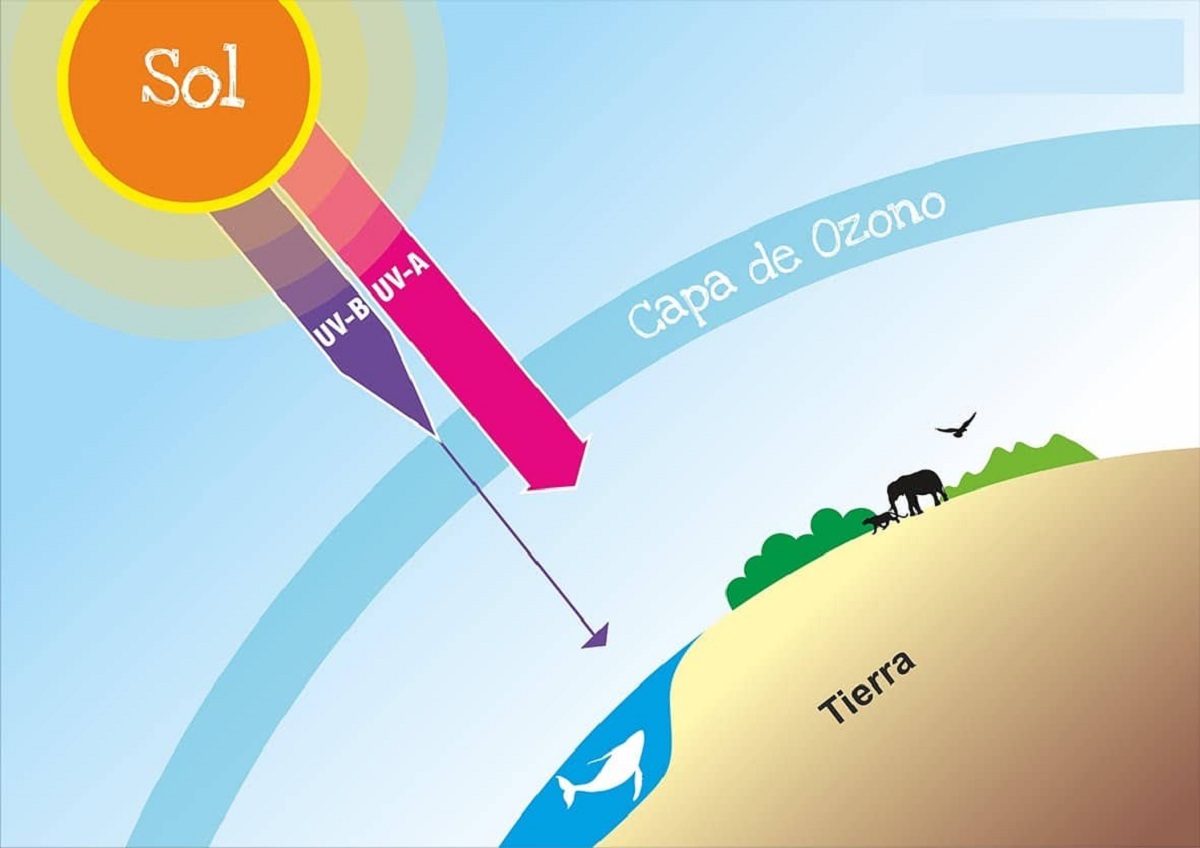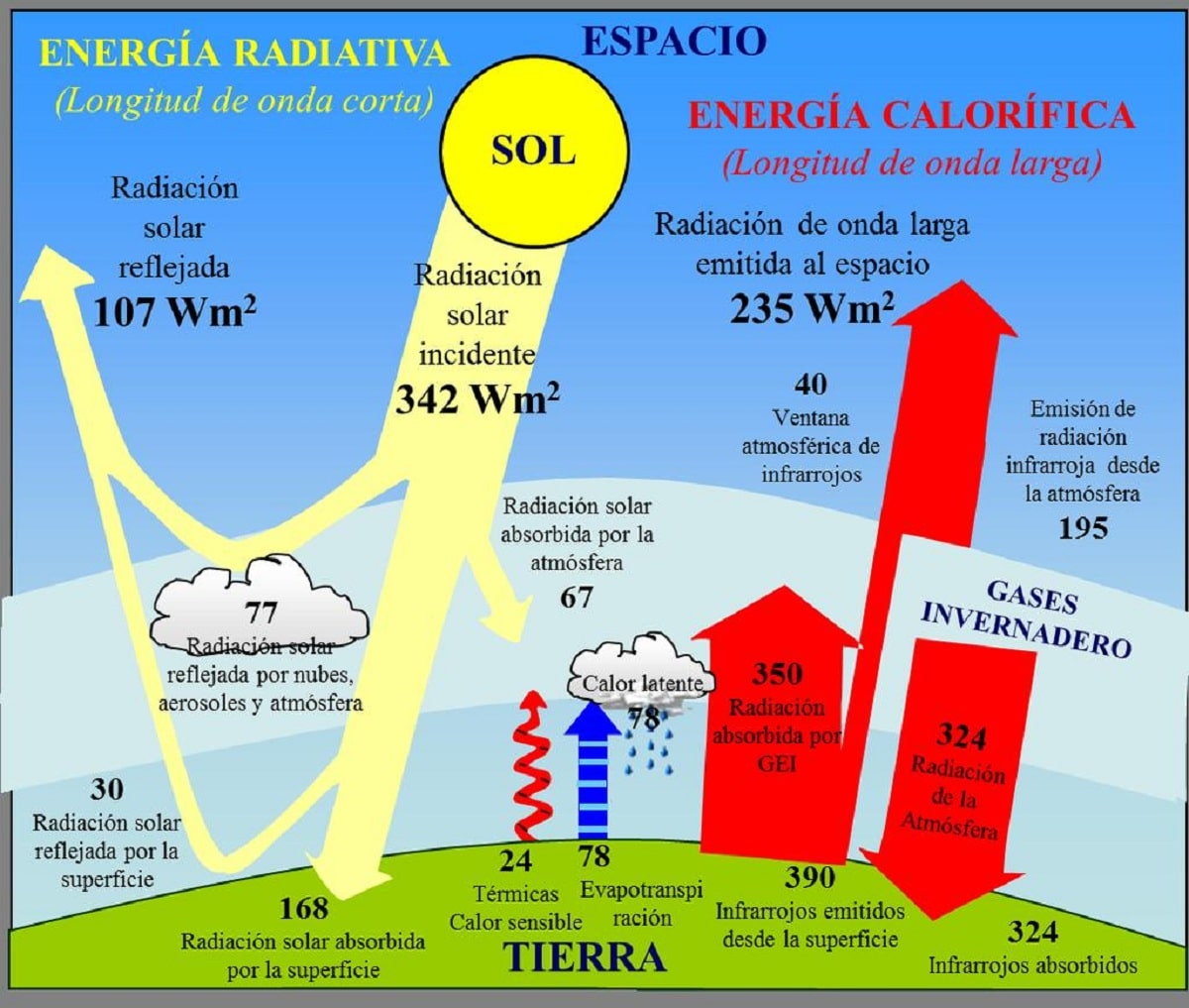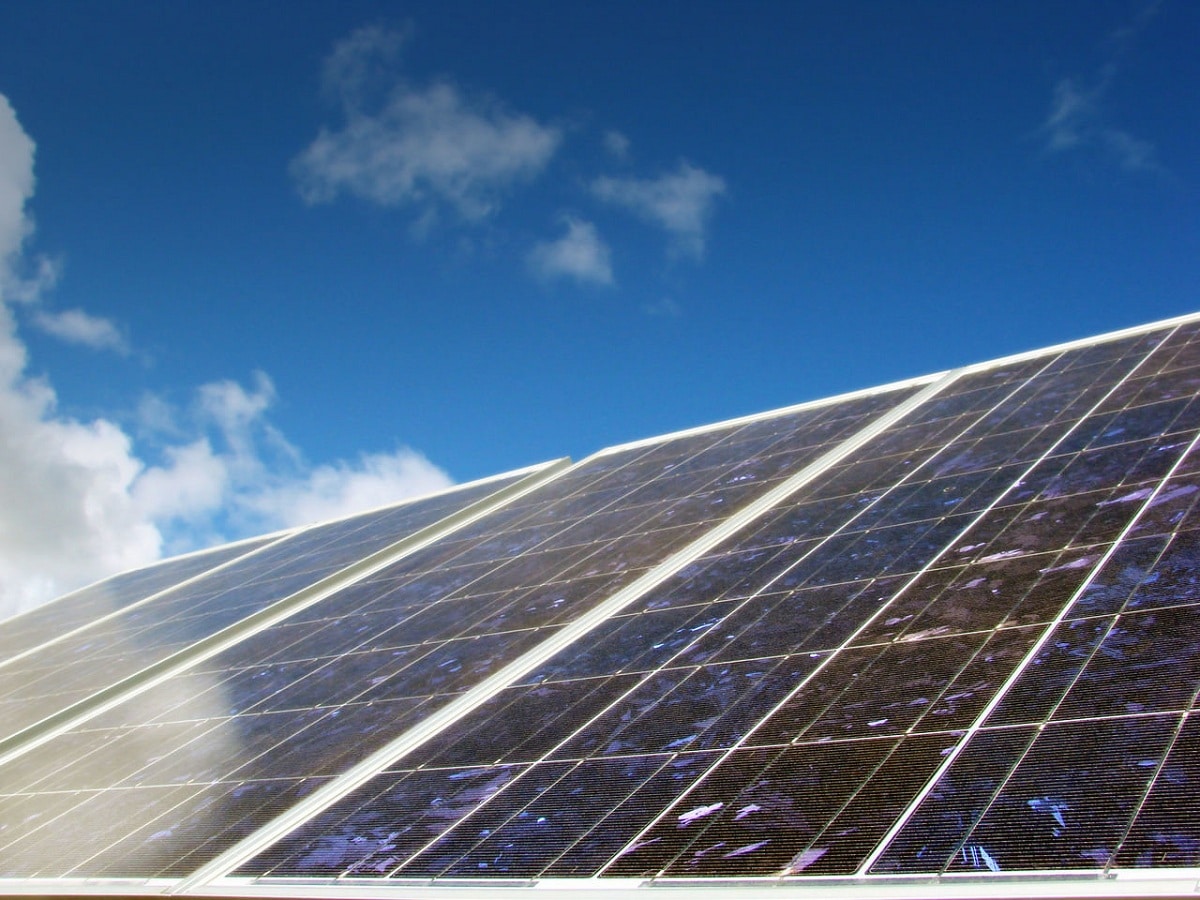
La solar radiation It is a quite important variable that serves to know the amount of heat that we receive from the sun on the earth's surface. Depending on some factors such as wind, cloudiness and the season of the year, we receive a greater or lesser amount of solar radiation. It has the ability to heat the surface of the ground and objects without hardly heating the air. There are different types of solar radiation depending on the origin and its characteristics.
Know everything related to solar radiation, the types that exist and what effects it has on the planet and life.
What is solar radiation

It is the flow of energy that is received by the sun in the form of electromagnetic waves of different frequencies. Among the frequencies that we find in the electromagnetic spectrum we have the best known as visible, infrared and ultraviolet light. We know that almost half of the solar radiation that our planet receives has a frequency comprised between the ranges of 0.4μm and 0.7μm. This type of radiation can be detected by the human eye and is what constitutes the strip that we know as visible light.
The other half is mostly in the infrared part of the spectrum and a small part in the ultraviolet. To be able to measure how much radiation we receive from the sun an instrument known as a pyranometer is used.
Types of solar radiation

Depending on the origin and characteristics of solar radiation, there are different types. We are going to focus on defining what the different types are and their main characteristics:
Direct solar radiation
It is about the one that it comes directly from the sun and undergoes little change in directions. This can be seen influenced by the wind, but not to a great extent. A reduction in heat can be felt during windy days. On surfaces, the heat does not affect as powerful when there is a strong wind regime. This type of radiation has a main characteristic and that is that it can cast a defined shadow from any opaque object that intercepts it.
Diffuse solar radiation
It is a part of the radiation that reaches us from the sun and that is reflected by or absorbed by clouds. It is known by the name of diffuse since they extend in all directions. This process takes place due to reflections and absorptions, not only from clouds, but from some particles that exist floating in the atmosphere. These particles are called atmospheric dust and are capable of diffusing solar radiation. It is also called diffuse since it is deflected by some objects such as mountains, trees, buildings and the ground itself, depending on its constitution.
The main characteristic of this radiation is that it does not cast a shadow on opaque objects that are interposed. The horizontal surfaces are those places where there is a greater amount of diffuse radiation. Quite the opposite occurs with vertical surfaces, since there is hardly any contact.
Reflected solar radiation
It is one that reflects the earth's surface. Not all the radiation that reaches us from the sun is absorbed by the surface, but some of it is deflected. This amount of radiation that is deflected from the surface is known as albedo. The terrestrial albedo is increasing greatly due to the effect of climate change and the melting of the polar ice caps.
The surfaces that are horizontal do not receive any type of reflected radiation since they do not see any terrestrial surface. The opposite is the case with diffuse solar radiation. In this case, it is the vertical surfaces that receive the greatest amount of reflected radiation.
Global solar radiation
It can be said that it is the total radiation that exists on the planet. It is the sum of the 3 radiations named above. Let's take the example of a completely sunny day. Here we will have direct radiation that will be superior to diffuse radiation. However, on a cloudy day there will be no direct radiation, but all the radiation that hits and is diffuse.
How it affects life and the planet

If the amount of solar radiation that our planet receives, life could not arise as it has. The energy balance of the Earth is 0. This means that the amount of solar radiation that the planet receives and that which it emits back to outer space is the same. However, some nuances must be added. In that case the temperature on the planet would be -88 degrees. So you need something that can retain this radiation and make the temperature levels comfortable and habitable so that it can support life.
The greenhouse effect is the engine that helps the solar radiation that falls on the earth's surface to stay largely. Thanks to the greenhouse effect we can have habitable conditions on the planet. When solar radiation hits the surface, it returns almost half back to the atmosphere to expel it into outer space. Some of this radiation back from the surface is absorbed and reflected by clouds and atmospheric dust. However, this amount of absorbed radiation is not enough to be able to maintain a stable temperature.
This is where greenhouse gases come in. It is a variety of gases that have the ability to retain part of the heat emitted by the earth's surface, returning the solar radiation that has reached it back to the atmosphere. Greenhouse gases are as follows: water vapor, carbon dioxide (CO2), nitrogen oxides, sulfur oxides, methane, etc. With the increase in greenhouse gases caused by human activities, solar radiation is becoming more harmful as it causes impacts on the environment, flora, fauna and humans.
The sum of all types of solar radiation are those that allow life on the planet. Let's hope that the problems of the increase in greenhouse gases can be alleviated and the situation does not become dangerous.